
How to Choose the Best Walk-In Cooler or Freezer
A walk-in fridge can last for many years if it is properly maintained, but it loses some of its effectiveness after many years in your restaurant. Since new technology is continually being released, it is recommended to replace a walk-in every 15 years or so. Do you think you may need to replace a walk-in freezer or cooler earlier?
It could be time for an upgrade when:
- Starting up a new business or branch location.
- Your old cooler is notably less efficient than it used to be.
- You start to notice wear on the exterior like metal skins deteriorating or separating from the foam insulation.
- The interior starts to collect condensation or frost build-up. This is an indication that the seal is no longer sufficient to prevent air from leaking in and out.
There are two basic types of walk-ins: prefabricated and built-in. This guide will focus on prefabricated units, which are built from pre-made urethane panels and usually come in set layouts and sizes, which make them quick to set up, easy to expand, and easy to relocate.
Built-in units on the other hand tend to use insulation covered by structural tiles on the walls and floors. They have the advantage of being built to your exact needs, but they also can't be moved or changed as easily as a prefabricated unit.
Prefabricated Walk-Ins
- Versatile; you can change the configuration as your business grows
- Less expensive; fewer contractor / installation fees
- Less disruption to your business
- May be limited by available sizes and configurations
- May not be as long lasting as built-in units
Built-In Walk-Ins
- Unlimited sizes
- Built exactly to fit your needs
- Not as easily expanded or altered to accommodate business growth
- More expensive to build

Walk-In Cooler Panels
The panels are what help your walk-in stay cold and run efficiently. They consist of insulation foam sandwiched between thin metal sheets, sometimes called the “skin”.
- When choosing a panel metal, you’re typically paying for increased durability and corrosion resistance the higher the cost.
- Aluminum tends to offer the lowest price point and all-around good corrosion resistance, while stainless steel usually comes in at the highest price point and best corrosion resistance. Galvanized steel, aluminum-coated steel, painted steel and other metals and coatings tend to fall somewhere in between.
- Embossed patterns provide additional strength and reduce the visibility of wear and tear.
- Extruded polystyrene and polyurethane are the most common insulation materials. Both are great insulators, but extruded polystyrene is more resistant to moisture and has a higher structural strength than polyurethane. It also retains more of its insulating capacity (or the R-rating) over its life, where polyurethane will lose more of this capacity over time.
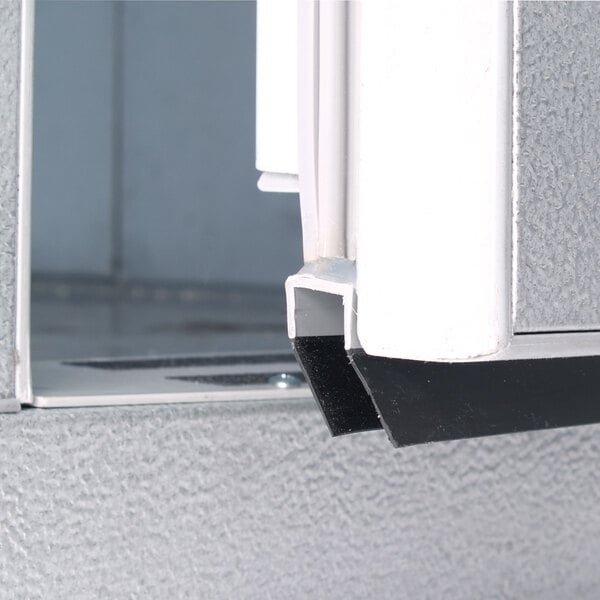
Walk-In Cooler Floors
You have a choice to order a walk-in with or without a floor included. Ultimately which one you go with depends on how you intend to use the unit and the layout of your space.
- Most included floors are made from smooth aluminum, which is good for general use. These are typically easier to install than a custom floor.
- If you’ll be using fully-loaded transport carts, heavy shelving units, or otherwise subjecting the floor to heavy loads, frequently, you should consider getting a floorless model and install a ground-contact concrete floor to stand up to these heavier loads.
- If your walk-in will be located above a basement or in a warm, uninsulated area you will need insulated flooring to keep hot air out and lock cold air in. This reduces strain on your compressor and prevents condensation that can damage the box and create a slipping hazard.
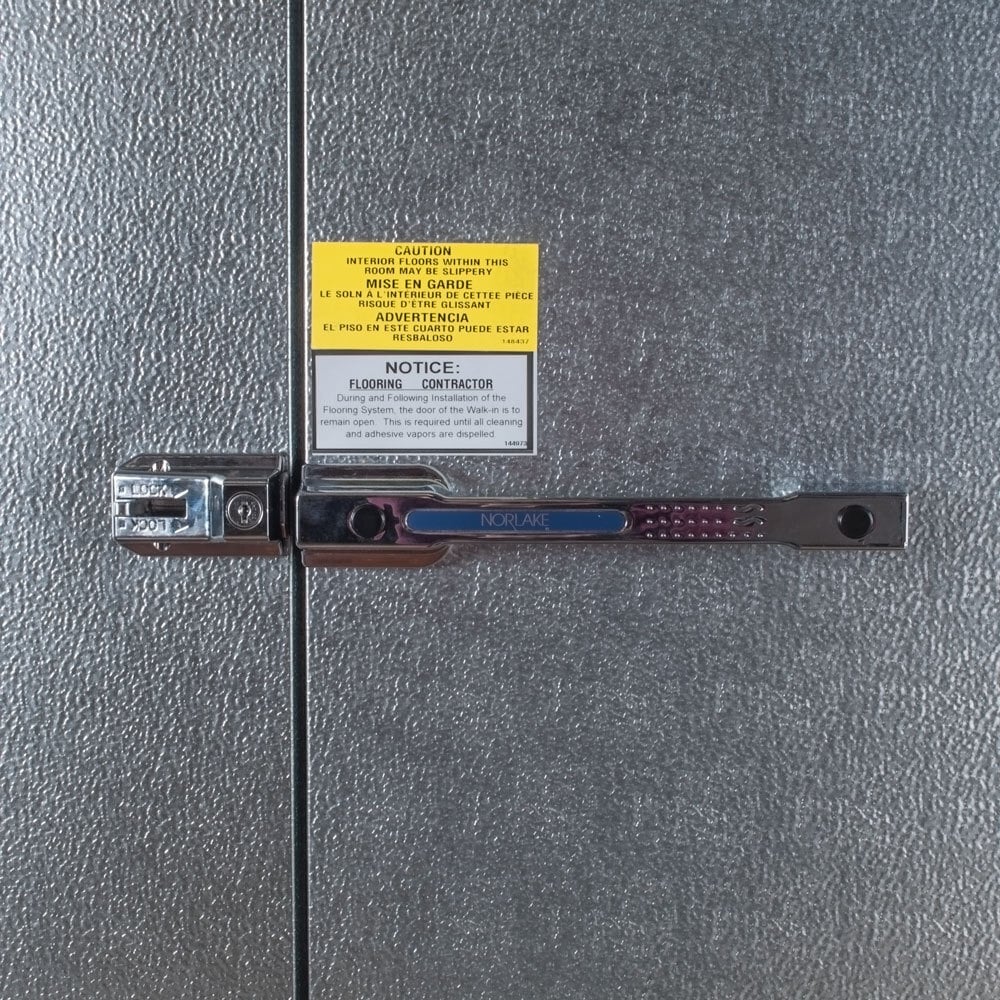
Walk-In Cooler Doors
The door is the most used part of your walk-in, and like the other parts of the unit you may have several options available to you.
- The door receives a lot of abuse as busy employees are understandably more focused on filling orders than the walk-in door. Investing in a unit with high quality hinges and latches, and durable gaskets will help maintain the door seal for energy efficiency.
- A self-closing door mechanism is also a good investment as it ensures the walk-in can’t be left open accidentally, making it work harder to maintain temperature in the best case scenario, and causing spoiled product and refrigeration system damage in the worst case.
- Other options may include a small window to see the interior of the unit, or locks to secure food after hours.
Walk-In Cooler Refrigeration Systems
To bring it down to basics, you need to know how much power the refrigeration system needs to cool the walk-in box and where you want to put that system. The available space and layout of your facility will have a big impact on which options are available to you.
Generally speaking walk-in coolers will require a compressor of around 1/2 hp, while walk-in freezers will require a compressor of around 1 hp. This is very dependent on the size and layout of your setup, though, so be sure to consult product literature for specifics.
You'll also want to consider how the refrigeration system is controlled and monitored. Do you want a digital or dial display? How easy is it to access the controls? If your business uses a HACCP plan, then consider temperature monitoring and recording systems to make data collection easy.
|
|
|
|---|---|
|
Remote Systems |
|
|
Pre-Assembled Remote Systems |
|
|
Top Mount |
|
|
Side Mount |
|
Now that you know about the different components that make up most prefabricated walk-in coolers, it's your job to find the best walk-in cooler for your business. There are many variables, but here are a few basic things that you can nail down right now:
- Do you need a walk-In freezer or a refrigerator?
- Will your walk-in be indoors or outdoors?
- How much storage space does your walk-in need right now and to handle future growth?
- What are the space constraints of your facility?
- How can you arrange delivery / installation to have the smallest impact on your business?
- What steps can you take to maximize energy efficiency?
- What are the terms of your walk-in's warranty?
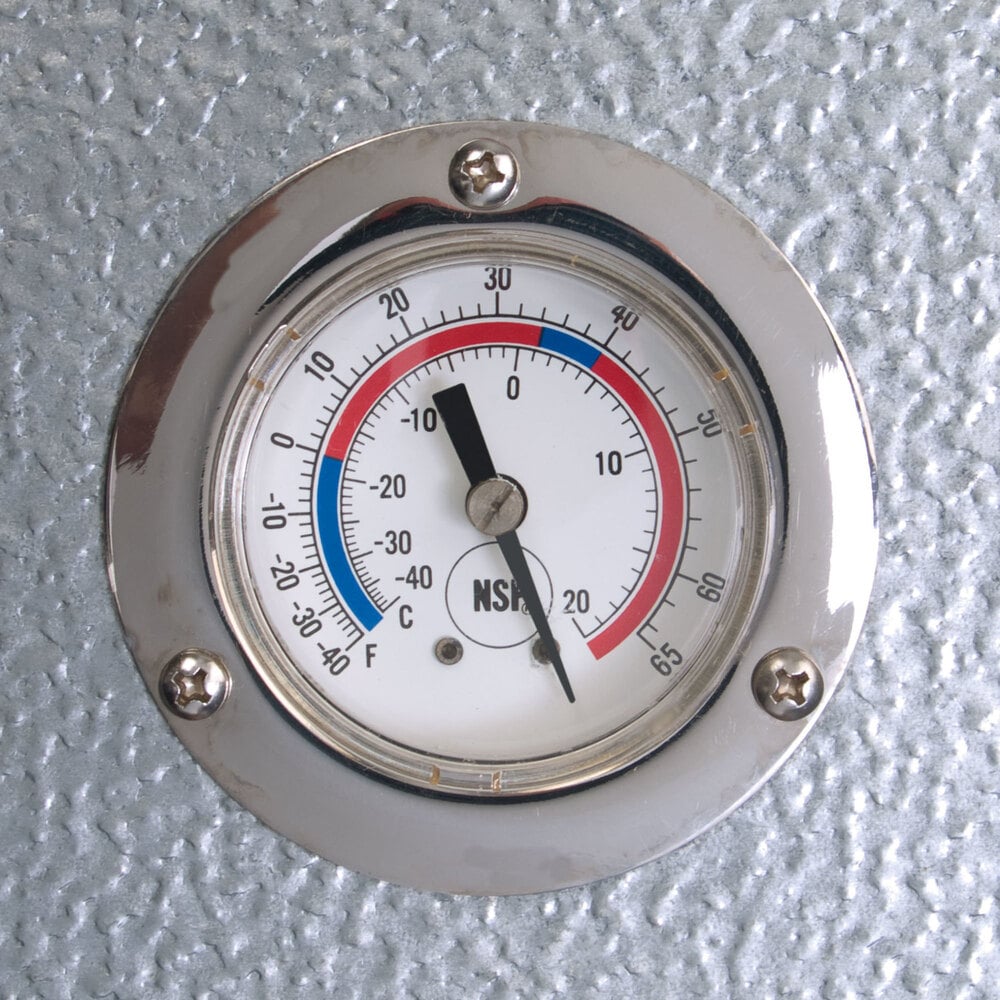
Walk-In Refrigerator / Walk In Freezer Temperature
The first question you want to ask is do you want your walk-in to store refrigerated or frozen foods? Walk-in refrigerators will hold foods below 41 degrees Fahrenheit, but a walk-in freezer temperature is lower, keeping food frozen around 0 degrees Fahrenheit.
- Refrigeration systems for freezers will be larger and more powerful than refrigerators.
- Freezer panels will be thicker to help maintain the colder temperatures.

Outdoor Walk-Ins
Walk-Ins are designed to be installed either indoors or outdoors, they’re not interchangeable. If you do decide to go with an outdoor walk-in box, you’ll want to consider a few other factors:
- A rain roof prevents water from leaking into the box. This can be as simple as metal flashing installed over the roof seam or as extensive as a polyvinyl roof system with connectors and a rain hood over the door.
- For areas with freezing winters, the unit may require a winterizing kit. This will include a compressor cover, a heater to warm the oil in the compressor for proper circulation, and various other components to help your cooler operate properly in freezing conditions.
- In addition, you may choose to purchase an interior heater kit that will keep refrigerated items from freezing when the ambient outdoor temperature is consistently below 32 degrees Fahrenheit.
Walk-In Cooler Sizes
Walk-ins come in a wide range of floor plans and configurations, from tiny boxes that give a small boost to storage, to massive units that hold vast quantities of food. When determining which one to use, a good rule of thumb is:
1 cu. ft. = about 28 lb. of food.
This can help serve as a good walk-in cooler size calculator to get in the right ballpark. Also be sure to consider:
- The maximum amount of food you need to store right now.
- The amount of additional storage you will need within the next 10 - 15 years as your business grows.
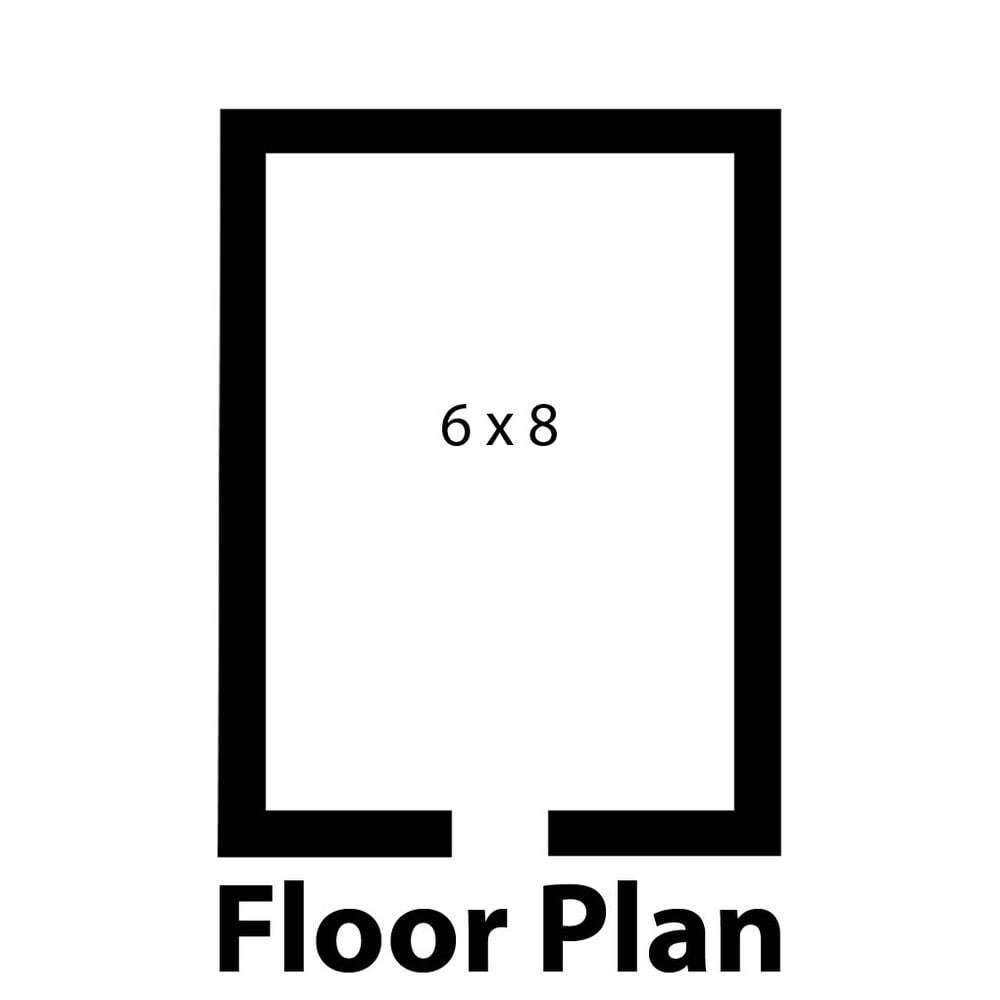
Walk-In Cooler Space Constraints
The most important thing you can do prior to ordering a new walk-in is to measure your space and read over the relevant literature carefully to ensure that when it’s delivered, everything will fit and your installation will go smoothly! There are many walk-in sizes available so you will most likely be able to find the appropriate one for you, even when you have limited space.
- Remember, you are limited by the space you have now, or the space you can build.
- Coolers will require extra space on all sides for ventilation. Generally you can expect a minimum of 1” clearance from the interior walls. There should be at least 2” between the top of the walk-in and the ceiling, but each manufacturer will specify this differently.
Walk-In Cooler Delivery and Installation
Having a new walk-in delivered and installed takes time and can disrupt operations, so plan ahead and take steps to lessen the impact on your workflow. Some general tips include:
- Wait for a slow period, or until after you're closed for the day to schedule delivery.
- Warn staff ahead of time so they can prepare.
- Address any temporary workflow changes with your staff, if the installation will impact this.
- Consider how easy it is to assemble the unit and program the refrigeration system. Reading the manuals and watching installation videos before the cooler arrives will help you get up and running faster!
Walk-In Cooler Energy Consumption
Making your cooler more energy-efficient can increase the cost of the installation, but when it's done right it will help you save money on your energy bill in the long run, and reduce strain on your refrigeration system, which will help it last longer too.
- Most coolers, especially freezers, should be installed on insulated floors with thermal barriers under each wall panel. This reduces temperature transfer to help the cooler run more efficiently.
- Take care that the panels are installed correctly and that the cooler is as leak-proof as possible.
- Design your shelving system in such a way that it allows air to flow freely around the box. Large obstructions can hamper airflow and, in turn, affect cooler efficiency.
- Also consider using LED lighting. This is becoming more and more popular as a standard feature but if you have the choice, they use much less energy and last longer than incandescent bulbs.
Walk-In Cooler Warranties
A walk-in is a big investment and it can be a big hassle to replace one, so make sure that you review the terms of your walk-in's warranty before ordering and consider:
- How long is the unit protected? How long are individual components like the panels and refrigeration system protected?
- Are there specific requirements that must be met to be eligible for warranty repairs? The only thing worse than having to replace a walk-in is finding out that the warranty won't cover the repairs because it was installed incorrectly.
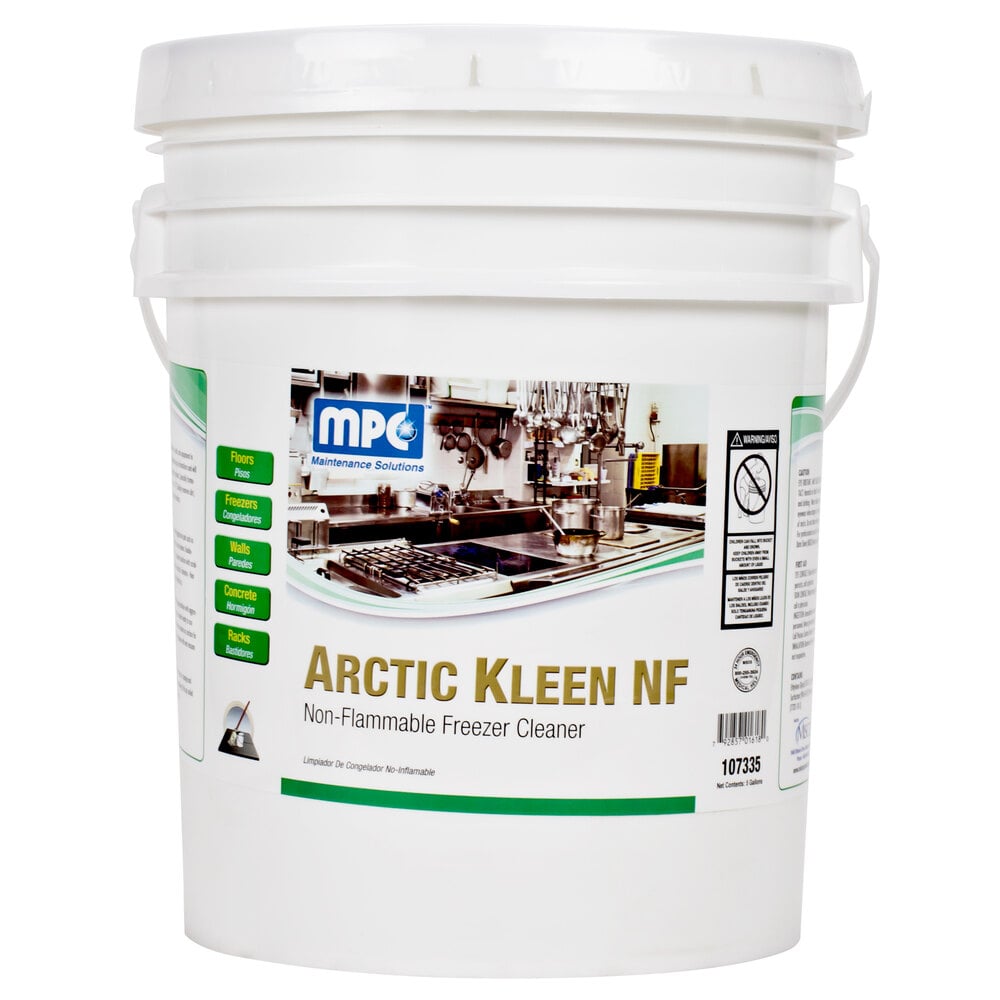
To clean and sanitize your walk-in cooler or freezer, use an approved cleaning solution like 4 oz. of bleach in a gallon of water or Arctic Kleen freezer cleaner. Be sure to follow the manufacturer's directions when cleaning to achieve the best results. Some other accessories that can be helpful when cleaning a cooler include mops, brushes, sprayers or buckets, and safety apparel like gloves and protective glasses.
Keep the door in good condition to maintain the unit's energy efficiency. By keeping dirt and debris out of the door seal, you'll extend the life of the door and the gaskets. If any of the gaskets start to wear out, replacing them is a relatively inexpensive way to keep your cooler in top condition.
Make sure that the condenser coils are kept clean. When they become clogged, it puts additional strain on the compressor and can cause the refrigeration system to give out.

Mildew and bacteria can grow on the walls, ceiling, and floor inside a walk-in cooler or freezer. It's a good idea to regularly wipe down all surfaces to prevent the growth of harmful microorganisms. Also, avoid using corrosive chemicals and high-pressure hoses as these can damage the metal skins on the panels.
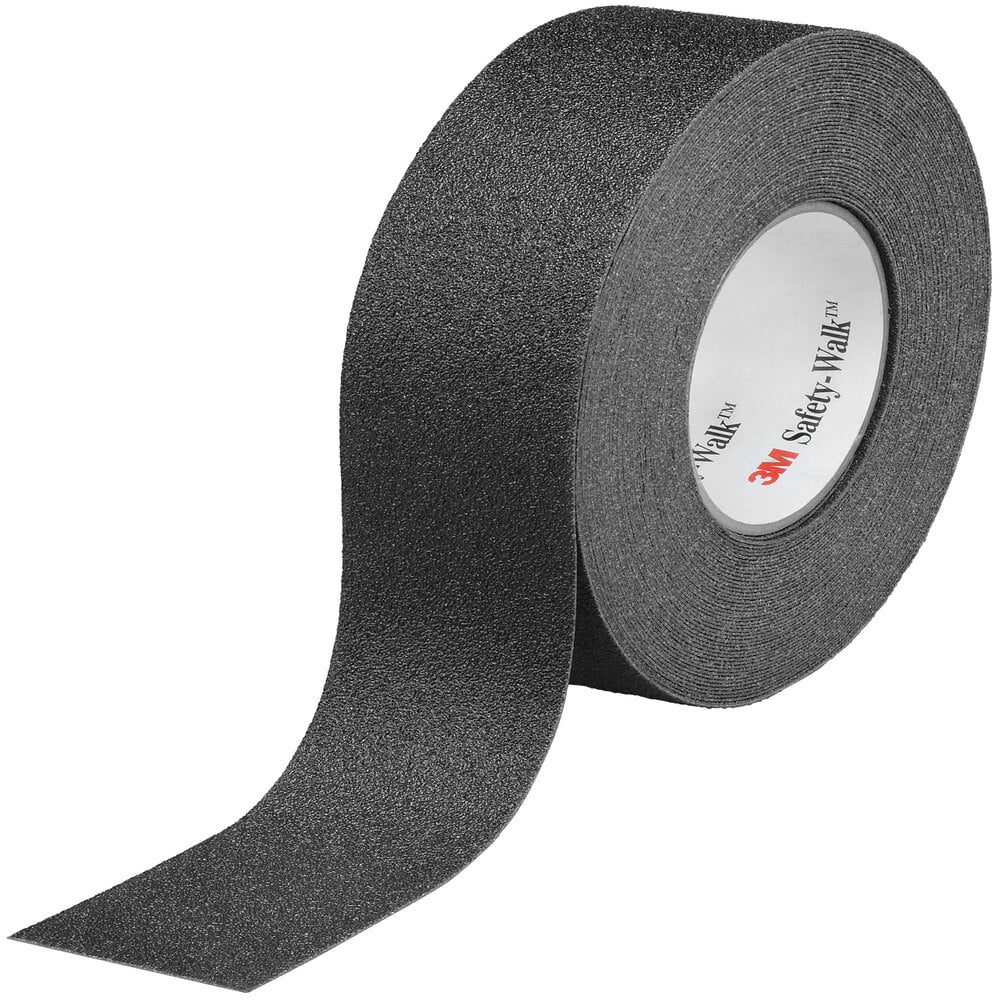
Once your cooler is installed, there are still many items you'll need to get it ready for use. To maintain your cooler and ensure that it continues to work properly, we offer everything from cleaning solutions to refrigeration thermometers. And don't forget about shelving and racks! Check out our assortment of walk-in accessories to make sure that you have everything you need once your cooler is up and running.
- Ramps: Will you be rolling carts or pan racks into your new cooler? You may need a ramp to get heavily-laden carts over the threshold.
- Pressure Relief Valves: Some municipalities require that a pressure relief valve be purchased with a walk-in. This is a device that prevents the refrigerant from exceeding safe pressure limits. Before making a purchase, you'll want to check your local regulations to see if this applies to you.
- Refrigeration Systems: You have the option to purchase just the walk-in cooler box or just the refrigeration system. If you want to put together your own combination of box and refrigeration system, or replace a broken component, we can help you do just that.
- Shelving: Once your cooler is installed, you'll need to organize and prep it for safe, sanitary food storage. FDA codes require food be kept away from the walls and at least 6" off the floor. If you are shopping for shelving systems or dunnage racks, our Regency green epoxy or black epoxy wire shelving can help you store food safely so you'll ace your health inspections.
- Refrigerator / Freezer Thermometers: Though exterior temperature displays are a great way to get a quick picture of how the unit is performing, placing thermometers strategically inside your cooler will help you make sure that proper temperatures are maintained throughout the entire box.
- Non-Skid Tape: Smooth aluminum or concrete floors can become slippery in a damp environment. Using strips of non-slip tape can prevent accidents and ensure that your employees stay safe while stocking supplies or retrieving food from the cooler.
- Strip Doors: Adding an interior strip door to any cooler can help maintain energy efficiency and prevent pests from getting inside! When you need to leave your cooler door open for extended periods of time, to load or unload food for example, a strip door helps keep cold air in while still allowing workers and carts to easily pass in and out of the cooler.
Related Resources

Different Types of Restaurant Shelving
Creating and maintaining your storage area efficiently in your business can be challenging, particularly if you have limited space and lots to store. Purchasing a shelving unit allows you to organize and increase your storage space. There are different types of restaurant shelving, materials, components, and accessories to consider when purchasing a unit, each with pros and cons. With this in mind, we walk you through each shelving option, its benefits, and where it fits in your commercial kitchen . Shop All Restaurant Shelving Use the following links to explore different types of restaurant shelving: Restaurant Shelves Shelving Materials Types of Shelving Mounts Types of Specialty Shelving Shelving Accessories Popular Shelving Brands Where

Reach-In Refrigerator and Freezer Buying Guide
From large institutional cafeteria settings, to small mom and pop restaurants, reach-in refrigerators and freezers can both improve the quality and speed of service, as well as help you save money. Because your reach-in fridge or freezer will be the most heavily used piece of equipment in your kitchen, it is important to find the proper configuration of door type, compressor, and size to perfectly fit your needs. Be sure to check out our commercial refrigerator reviews as well!
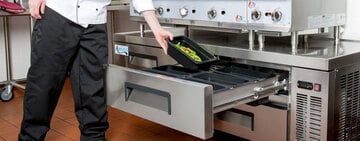
Chef Base Buying Guide
When you're planning the layout of your kitchen, both equipment size and function play an important role in determining what to include in your work environment. For efficient, streamlined work stations, chef bases are available with refrigerators or freezers to fit every need as you make the most out of your valuable kitchen space.
- Topics 1346
- Industrial 55
- Troubleshooting Guides 21
- Restaurant Management 128
- Bar Management 55
- Catering Tips 35
- Bakery Management 42
- Food Trucks & Concessions 49
- Advertising & Marketing 37
- Eco-Friendly Tips 11
- Facility Layout & Design 41
- Coffee Shop Tips 28
- Installation & Maintenance 51
- Janitorial & Pest Control 30
- Safety & Sanitation 88
- Startup Tips 104
- Menu Design 10
- Kitchen & Cooking Tips 81
- Hospitality Management 23
- Pizza & Sandwich Shop Tips 36
- Smallwares 37
- Food Prep 88
- Tabletop Items 17
- Disposables 22
- Calculators & Tools 6
- Consumables 52
- Warewashing & Laundry 18
- Cooking Equipment 90
- Food Storage & Refrigeration 51
- Beverage Equipment 34
- Office Supplies 6
- Resource Type
- In-Depth Articles272
- Buying Guides296
- How-Tos93
- Product Reviews77


